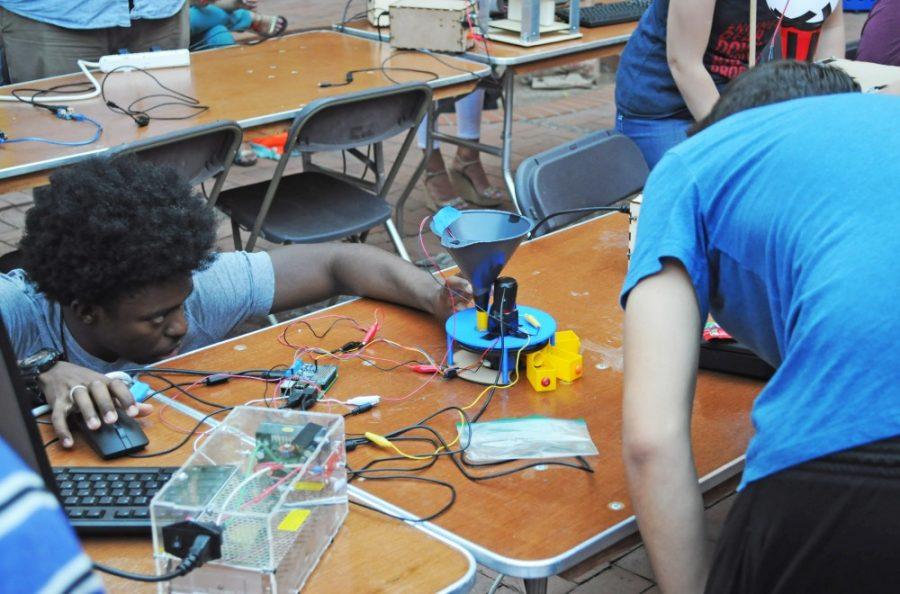Undergraduates in the College of Engineering and the School of Information came together last semester to test their skills and knowledge in a candy-sorting competition.
The student competitors were enrolled in two courses offered during the Spring 2017 semester: BME 210 and ISTA 303. The classes are extremely hands-on, instructing students on modeling, programming and practical electronics. To bring their creations to life, students also learned how to operate 3D printers and laser cutting machines.

“We try to teach as little as possible, and instead push them to apply what they learned to our labs and their own projects,” said David Lesser, a graduate student studying astronomy and astrophysics who co-taught the BME 210 course. “As you can imagine, we challenged the students a lot, but they all did a fantastic job of running with it.”
The classes were inspired by the Tucson makerspace community center Xerocraft, in which Lesser, assistant professor Peter Jansen and associate professor Urs Utzinger are actively involved. Many of the classes’ activities and labs were similar to those created for the makerspace.
RELATED: UA offers high-tech labs for students to explore, work
The competition was the culmination of a semester of hard work. Pitting the two classes against each other, teams designed machines to sort Skittles by color as quickly as possible.
Each robot had to be able to pick up a single Skittle, which it would then pass in front of a sensor capable of determining color. Once it determined the color of the candy, the machine had to be able to set the Skittle in the correct cup.

Scoring emphasized correct sorting and speed. Penalties were given for an incorrect color categorization, while points were awarded for fast completion times. The student response was more than enthusiastic.
“This was a very new experience for me, having a class where students don’t want to leave when the class ends,” Utzinger said. “Everybody actually contributed and wanted to participate in the contest. Everyone had a machine.”
The winners were a duo from the ISTA class, who’s robot not only categorized the whole bag, but managed to do so with an average of two Skittles per second. They won a small cash prize.
Students were not graded on their designs, however. “The competition was mainly meant to be fun and collaborative,” Lesser said.
RELATED: Campus iSpace offers students cutting-edge tech, instruction
While the candy-sorting contest was enjoyable for all involved, it was also a demonstration of the types of skills Lesser and Utzinger hope students will take away from their classes.
For Lesser, one of the main goals of the contest was to give students the ability to solve difficult problems with creativity, elegance and speed.
Utzinger hopes to see students walk away with more confidence in their abilities, especially if they are concerned about whether or not engineering is the right major for them.
“I think that every undergrad student has this concern about whether they’re made for the particular major they want to study,” Utzinger said. “I think that in this class [engineering majors] can see what engineering is about, what practical skills might be needed and whether they are having fun doing this.”
The maker class, as noted by Utzinger, will also make for a good addition to a resume as it demonstrates time and experience spent engaged in valuable, practical application of skills.
Both maker classes are currently limited to students within the biomedical engineering department, but the group responsible for the course hopes they will eventually be available to more students.
Follow Nicole Morin on Twitter









